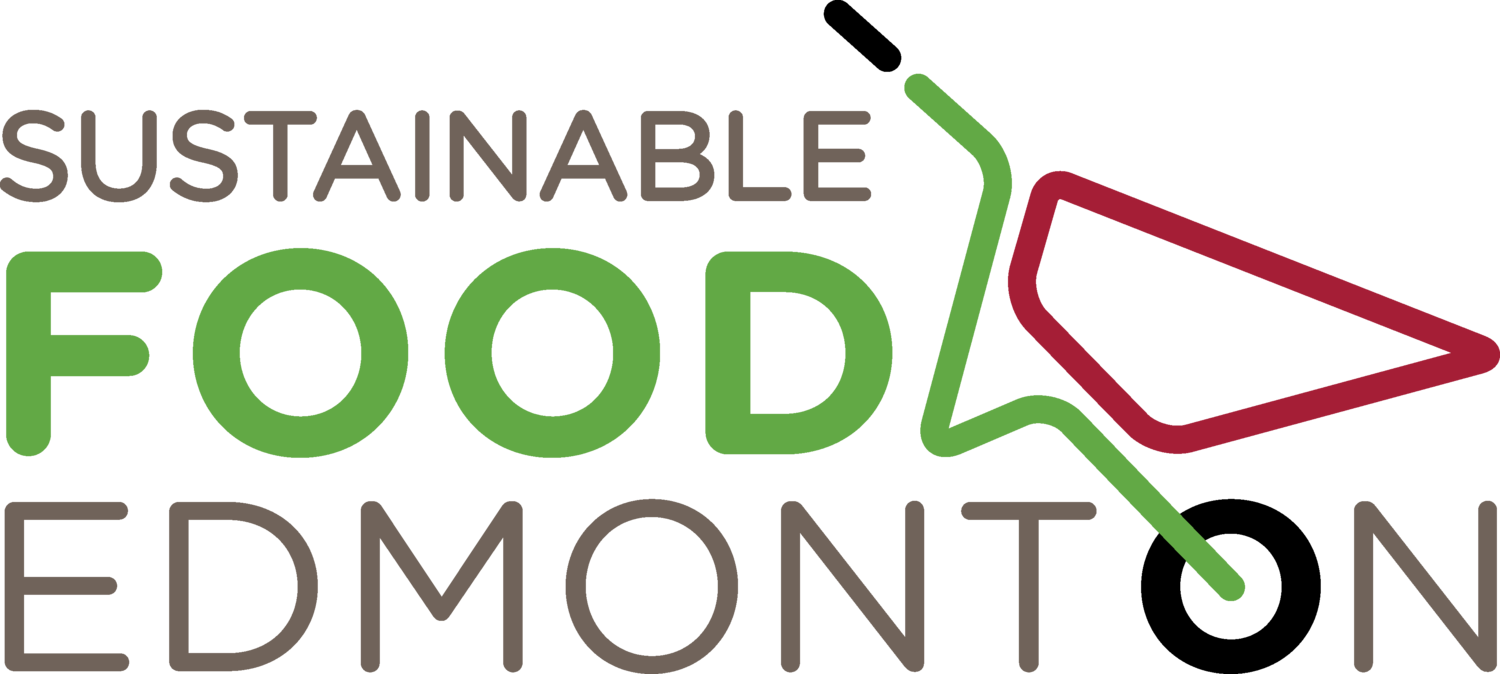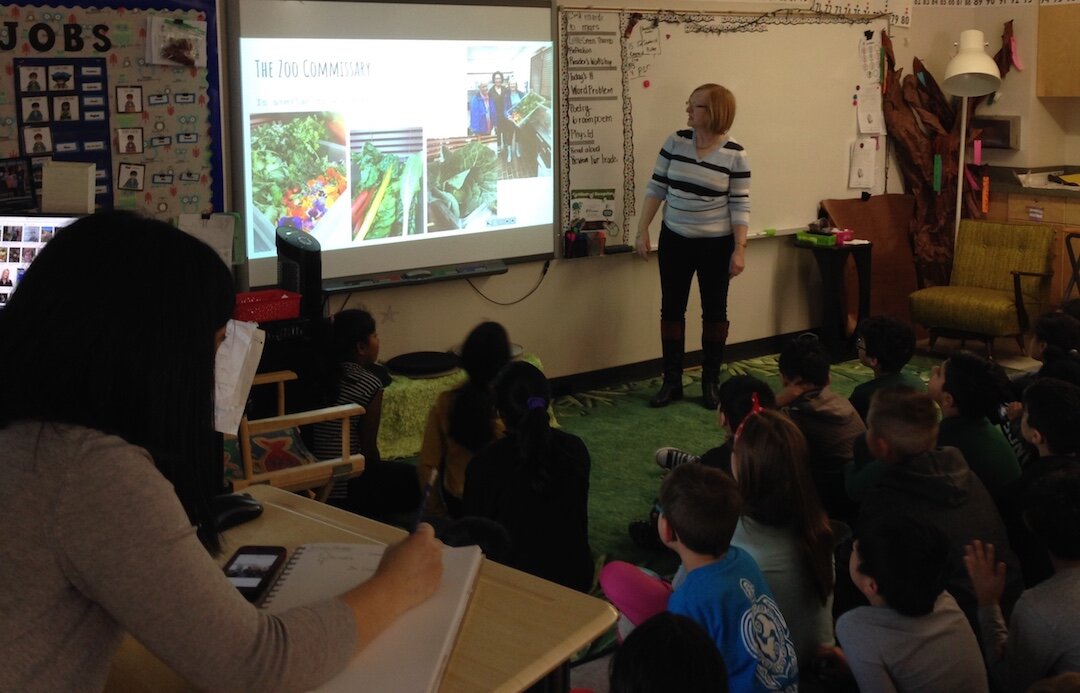Times are changing in our food scene. The importance of healthy food choices for all people and for the domestic and wild critters that share our planet is resonating with many. Awareness of the precarious situation of wild pollinators, and the high carbon footprint of large-scale meat production is increasing. Creative humans are pushing for solutions and exploring more planet-friendly options.
Meet our amazing speakers that visited 16 schools, each home to a Little Green Thumbs indoor garden. About 500 students had the opportunity to see photos, hear stories, ask questions or interact with materials the speakers brought to their school – just in the nick of time before schools closed due to the pandemic.
Silvia Ronzani with Camola Foods is a cricket farmer and an entomologist with a big passion for food. With her partner Claudio, they became the first cricket farmers in Alberta, selling high protein cricket flour and tasty snacks at local markets and through their online store.
In her classroom presentation, Silvia shared information, photos and short videos from their unique farm. A converted shipping container is home to thousands of crickets grown as a very high protein source. The students learned about the cricket lifecycle and their need for a very warm, dark environment, a little water and relatively low amounts of mixed grains to feed them. The children learned that cricket farming has a low space and carbon footprint compared to other sources of protein. The students had a chance to observe cricket eggs and incredibly tiny baby crickets. They learned to distinguish male and female crickets by the number of “tails”. While males have two cerci, females have two cerci and an ovipositor for laying eggs they lay in special boxes filled with a little bit of potting mix at the farm.
Did you know that Zebras like eating kale, and Lucy the elephant enjoys mint popsicles at the Edmonton Valley Zoo? Who knew that Arctic Wolves love to rub lavender all over their fur?! Susan Parker is a volunteer with the Edmonton Horticultural Society, and she has been instrumental in planning and growing an increasing number of vegetable, flower and herb beds for the zoo animals. Susan is part of a group of volunteers that make sure the beds are planted, weeded and harvested from spring to fall. Thanks to their work, wild pollinators, bird, reptiles, lemurs, wild cats, reindeer, camels, monkeys and other animals receive organic food or sensory enrichment. Susan’s presentation was a great way for our Little Green Thumbs classes to learn that even zoo animals benefit from home-grown, fresh veggies and herbs.
Patty Milligan, an educator with Northlands, again brought her very popular presentation and beekeeping toolkit to some of our LGT classes. The children learned about the difference between bumble bees, solitary bees, wasps and domestic honeybees. Patty explained their needs and how bees overwinter, make a nest, lay eggs, and care for their young. She highlighted the bee’s importance as pollinators for our food crops in fields and gardens. The children enjoyed exploring tools beekeepers use, and the products domestic bees produce, such as wax, propolis, and pollen. Most also welcomed a small treat of sweet honey.
We were also very pleased to have Kirk and Trudy Harrold back, sharing what they grow on their multi-generation family farm near Lamont. While the students had many questions about the animals at the farm, they also learned that the cows, sheep and a donkey eat a mixed food produced from the many crops grown in the fields. Challenging weather conditions and markets are prompting the Harrolds to investigate growing industrial hemp on some parts of their land that are suitable for that crop. Hemp fibers are used for building materials, the automotive industry, for textiles, insulation and a replacement for some plastic products. The Harrolds pride themselves in learning about new and sustainable opportunities while respecting the needs of their land and all creatures inhabiting their bioregion. They strive to practice good stewardship of the land that has been in their care for 113 years.
We feel fortunate that our speakers made time to visit some of our Little Green Thumbs classes. We hope that the children have gained an increased awareness of the connection between their indoor garden and the larger world of food production.
If you know of someone interested in visiting some Little Green Thumbs schools to speak about food production, please contact us.
Claudia Bolli, Little Green Thumbs








